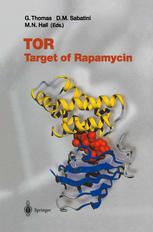

Most ebook files are in PDF format, so you can easily read them using various software such as Foxit Reader or directly on the Google Chrome browser.
Some ebook files are released by publishers in other formats such as .awz, .mobi, .epub, .fb2, etc. You may need to install specific software to read these formats on mobile/PC, such as Calibre.
Please read the tutorial at this link: https://ebookbell.com/faq
We offer FREE conversion to the popular formats you request; however, this may take some time. Therefore, right after payment, please email us, and we will try to provide the service as quickly as possible.
For some exceptional file formats or broken links (if any), please refrain from opening any disputes. Instead, email us first, and we will try to assist within a maximum of 6 hours.
EbookBell Team

4.3
38 reviewsTOR, the Target of Rapamycin was discovered a little over ten years ago in a genetic screen in S. cerevisiae in search of mutants resistant to the cytostatic effects of the anti-mycotic, rapamycin. Since that time orthologues have been identified in all eukaryotes examined to date, including humans. Recent studies have placed TOR at the interface between nutrient sensing and the regulation of major anabolic and catabolic responses. The significance of understanding the molecular mechanisms which control TOR function has been underscored by Phase 1 clinical trials, showing that rapamycin is not only therapeutically important as an immunosuppressive but is also efficacious in the treatment of solid tumors. Indeed, currently, homologues of rapamycin are in broad-based trials to determine its use in the treatment of other pathological conditions, such as inflammation and restenosis. Given these observations a great deal of attention has been drawn to TOR and its role cellular homoeostasis and human disease. Here we have gathered the leading figures in the field to summarize their own contributions to uncovering TOR function and to speculate where they think the field will be moving in the next few years.